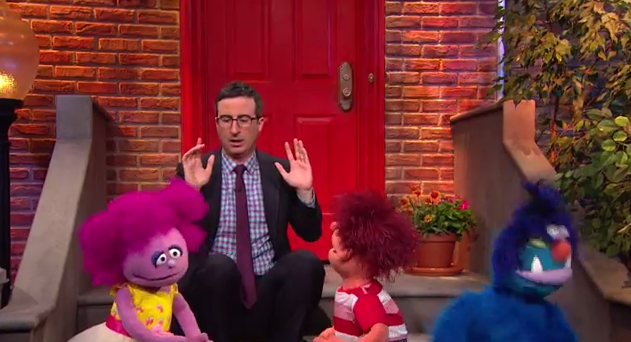On Sunday John Oliver tackled the “fundamentally broken” U.S. prison system in an extended segment on his HBO show “Last Week, Tonight.”
“We have more prisoners at the moment than China,” Oliver said. “We don’t have more anything than China other than, of course, debt to China.”
Oliver explained that the prison population in America has expanded eight-fold since 1970.
“The only other thing that has grown at that rate, since the seventies, is varieties of Cheerios. Fuck you, Fruity Cheerios, you’re trumped up Froot Loops, and you know it!” he said.
He noted that about half the people in prison are there for drug charges, and that minorities go to jail at a higher rate for drug charges.
“Our drug laws are a little draconian, and a lot racist,” he said. “Because while white people and African-Americans use drugs at about the same amount, a study has found that African-Americans have been sent to prison for drug offenses at up to ten times the rate for some utterly known reason.”
Oliver then referenced the “Sesame Street” puppet whose dad is incarcerated.
“We now need adorable singing puppets to explain prison to children in the same way they explain the number seven or what the moon is,” he lamented.
At the end of the segment, Oliver put together a skit with puppets to explain the problems with the U.S. prison system.
“But mandatory minimums for heroine and crack, stack the system against hispanics and blacks,” they sing. “Our prison population is bigger than Slovenia, because we put people in jail instead of treating schizophrenia.”
Watch the video:







John Oliver might be the best thing on TV today. He’s like a combination of The Daily Show and Vice. I am so glad he got to step out on his own and do this.
Prisons are a profit center since slavery ended.
“Florida Governor’s Campaign Backed by Private Prison CEO
www.nationofchange.org/florida-governor-s-campaign-…”
…and he didnt even get to the horrors of the private probation system
There’s a book called “Slavery by Another Name: The Re-Enslavement of Black Americans from the Civil War to World War II” that talks about how Southern states introduced laws to allow blacks to be arrested on very minor crimes, such as not having a work contract or being out after dark without written permission of their employer, and then be swept up into a contract labor system that kept them enslaved for years at a time. Not virtually enslaved. Actually enslaved. The book speaks extensively about northern Alabama and the huge industrial works there at the Sloss steel works and the mines that supported it. Contracted prison labor died at horrifc rates under unbelieveable conditions for decades. It also had the side effect of making it practically impossible to organize the big industrial works in the south, because many, if not most, of them were run by slaves. I truly believe that’s the end goal of the private prison industry: a slave labor system to use as a hammer to drive wages and benefits down nationwide.
I know the work and the PBS version of the book is good also. I view it as a compendium of other works tracing the ills of Reconstruction, the migration patterns out of the South, the rise of the KKK and the Red Summer, and the ultimate decision to anchor the freemen into a similar system as the share croppers.
Parchman in MS and Angola in LA were known for prison work camps where you never left. The Northern states followed suit after WWI and the migration uptick following WWII. It is now a thriving private sector profit center, sweeping in the mentally ill, the poor and immigrants. In some cases it is no more than debtor prisons like Europe which supplied the majority of Colonial workers to America.